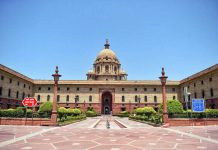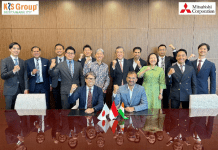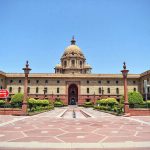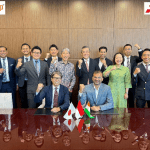Auckland (New Zealand): India and New Zealand on Wednesday reiterated their commitment to strengthening trade and economic cooperation, with Union Minister of Commerce and Industry Piyush Goyal stressing that the partnership must rest on mutual respect, realistic expectations, and a long-term vision for growth.
Speaking at the New Zealand-India Business Forum during an interactive session with New Zealand’s Minister for Trade Todd McClay, Goyal said both countries had agreed to approach the relationship “respecting each other’s sensitivities” and to seek “win-win solutions” that would elevate the partnership to the next level.
“Every trade relationship must be seen in its proper context,” Goyal said. “What I do with the European Union or ASEAN cannot become a benchmark for what I will be able to do with New Zealand. Size and scale have to be taken into consideration.”
Goyal said India values New Zealand as a trusted trading partner despite current trade volumes being modest. “Probably you are the 80th or 79th trading partner. But that didn’t deter me from looking at you as an important partner,” he said, noting that a smaller base offers greater potential for faster growth. He identified agriculture, maritime cooperation, aerospace, and defence as areas with strong potential for collaboration.
According to official figures from Statistics New Zealand and India’s Ministry of Commerce, the total bilateral trade in goods and services between India and New Zealand reached USD 1.75 billion in 2023-24, with New Zealand exporting USD 0.84 billion worth of goods and services to India and importing USD 0.91 billion from India.
India’s key imports from New Zealand include wool, iron and steel, fruit and nuts, and aluminium, while its main exports to New Zealand comprise pharmaceuticals, machinery, made-up textile articles, and precious stones and metals.
Trade between the two nations has remained steady over the past five years. Bilateral trade stood at USD 1.50 billion in 2022, USD 1.55 billion in 2021, USD 1.67 billion in 2020, and USD 1.97 billion in 2019, the highest during the five-year period. Officials said the figures underline the resilience of the relationship and the potential for renewed momentum through facilitative policies and greater business engagement.
Goyal emphasized that India’s approach to the proposed trade pact goes beyond traditional tariff reductions. “We’ve been trying, in this trade negotiation, to go beyond the traditional tariff negotiations to newer ways to expand this relationship,” he said. “It’s not just about trade or immediate import-export, but also what we add to human development.”
New Zealand exports a variety of goods to India, while its imports from India include pharmaceuticals, machinery, textiles, vehicles, and apparel. Travel is the largest services export between the two nations, followed by education and government services.
New Zealand’s Minister for Trade Todd McClay said New Zealand regards its relationship with India as a “strategic priority.” “When countries trade with each other, people grow the relationship that we need them to. We’ve put a lot of effort on both sides,” he said, noting that Prime Minister Christopher Luxon’s recent visit to India with the largest-ever business delegation marked a milestone in bilateral ties.
Both ministers emphasised that trade talks should focus on creating opportunities that benefit people and businesses alike. “Opportunity is what we decide to make of it,” McClay said, adding, “This trade agreement is not about today or tomorrow or the next year. It’s about the next 20 years and how much we achieve together.”
The ministers also highlighted progress in aviation cooperation, with Air India and Air New Zealand working toward launching direct flights by 2028. McClay said, “It’s our job to make sure that happens so that the relationship grows and young people can travel easily for study and work.”(ANI)











